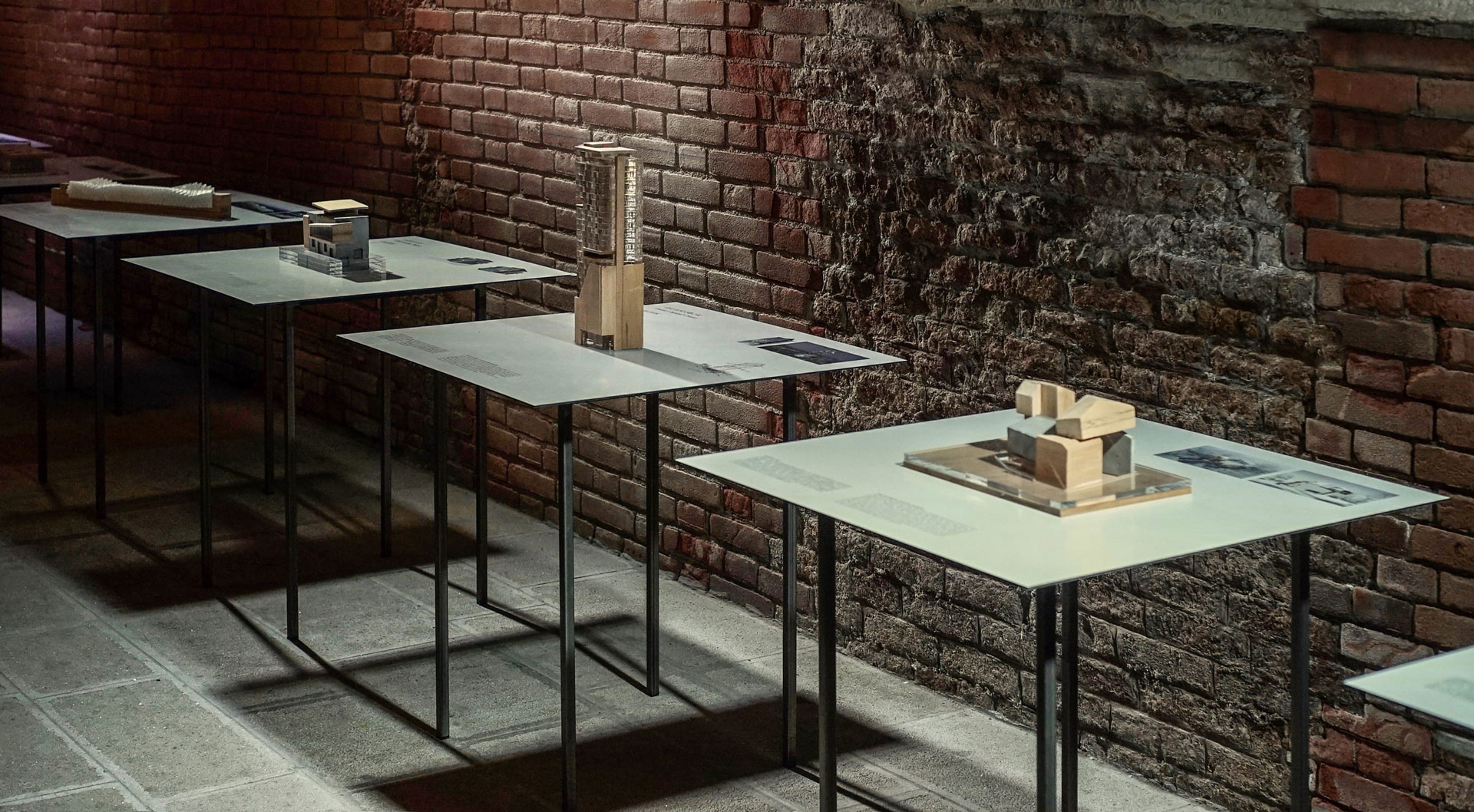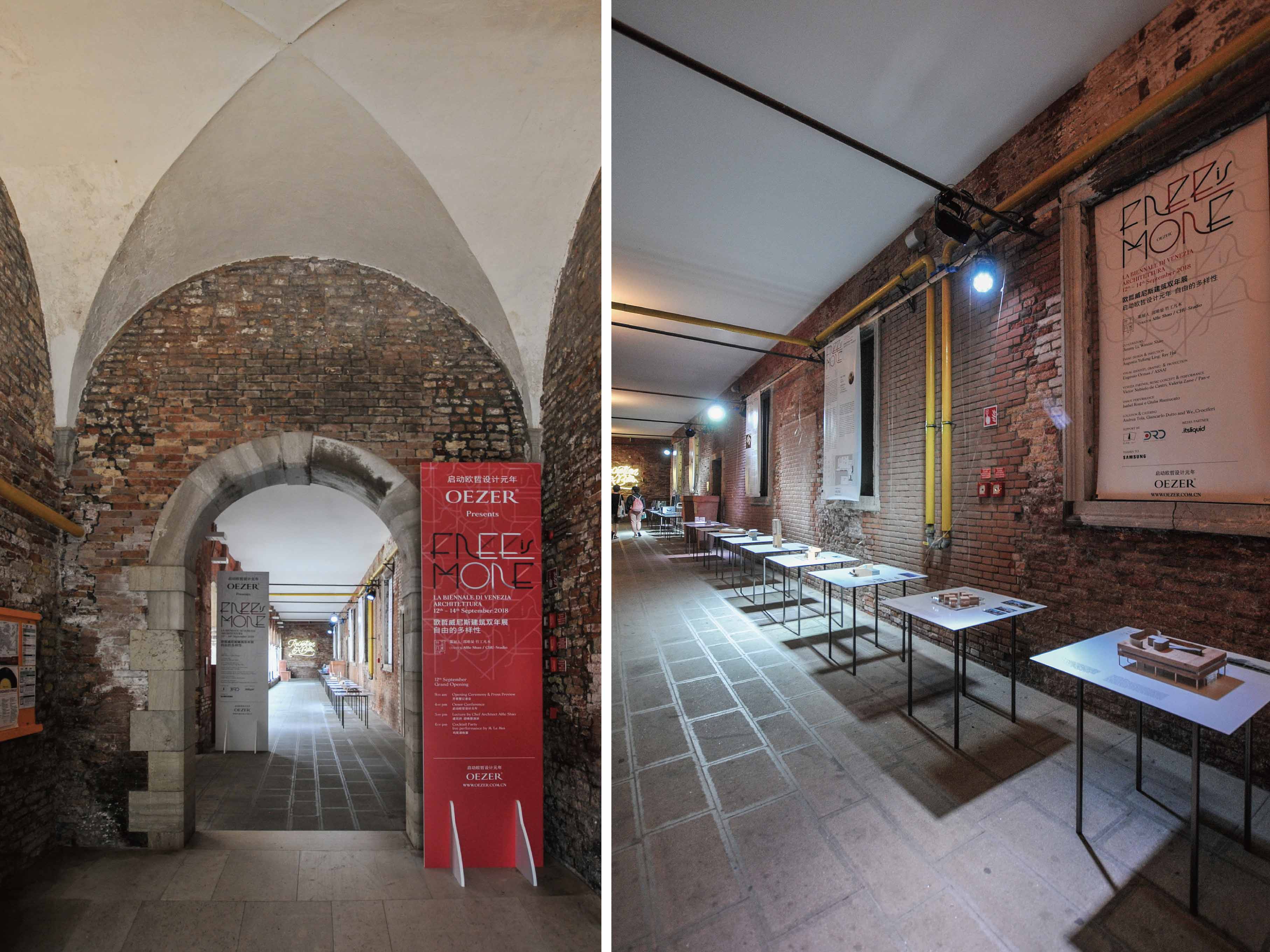Completion Year: 2018
Location: Italy
Completion Year: 2018
Location: Italy
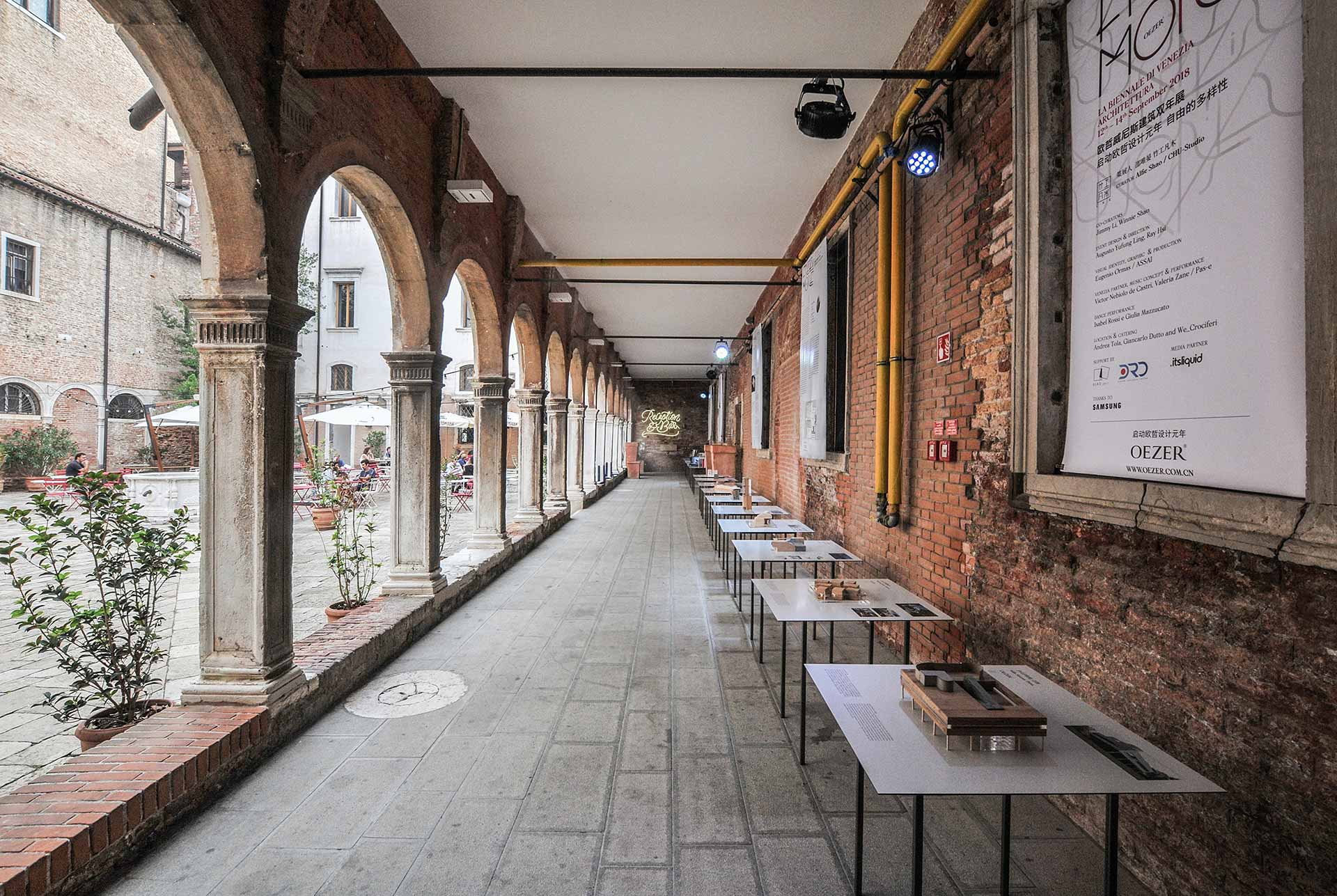
文化資產新生-威尼斯修道院的空間活化契機
Generation of Cultural Heritage – The Spatial Revitalization Opportunity of Venice Monastery
Crociferi修道院位於威尼斯北側的卡納雷吉歐區,是具有兩百多年歷史的古老建築,近年隨著威尼斯在地人口減少,修道院逐漸荒廢,建築物轉而租給學校作為學生宿舍與青年旅店之用。在2018年威尼斯建築雙年展舉辦前夕,幾名來自亞洲各地的年輕建築人,希望能在建築雙年展期間對當代建築議題響應和發聲,因此主動與現時經營Crociferi修道院的校方接洽,於雙年展期間將部分修道院的區域租予有關單位辦理展覽。這是Crociferi修道院第一次允諾對外開放給展示使用,藉由本次展覽的舉辦,原先荒廢的區域獲得再利用的契機,建築物在硬體空間與軟體運用上,都能與新時代產生鏈結與對話,也引來了當地媒體Domus和Itsliquid的關注。
As the Crociferi Monastery is located in the Cannaregio district on the northern side of Venice, it is an ancient building of more than 200 years old. And in recent years, with the population of Venice decreasing, the monastery was gradually abandoned, and transferred to a school as a student dormitory and youth hostel. So, on the eve of the 2018 Venice Biennale, several young architects from all over Asia hoped to respond and speak to contemporary architectural issues during the Biennale, so they took the initiative to approach the school regarding renting part of the monastery's areas during the Biennale. Since this was the first time that Crociferi Monastery gave permission for access to external parties, and through this exhibition, the originally abandoned area was re-claimed, which converted the building to be re-connected to the new age, which also gathered the attention of local media, namely Domus and Itsliquid.
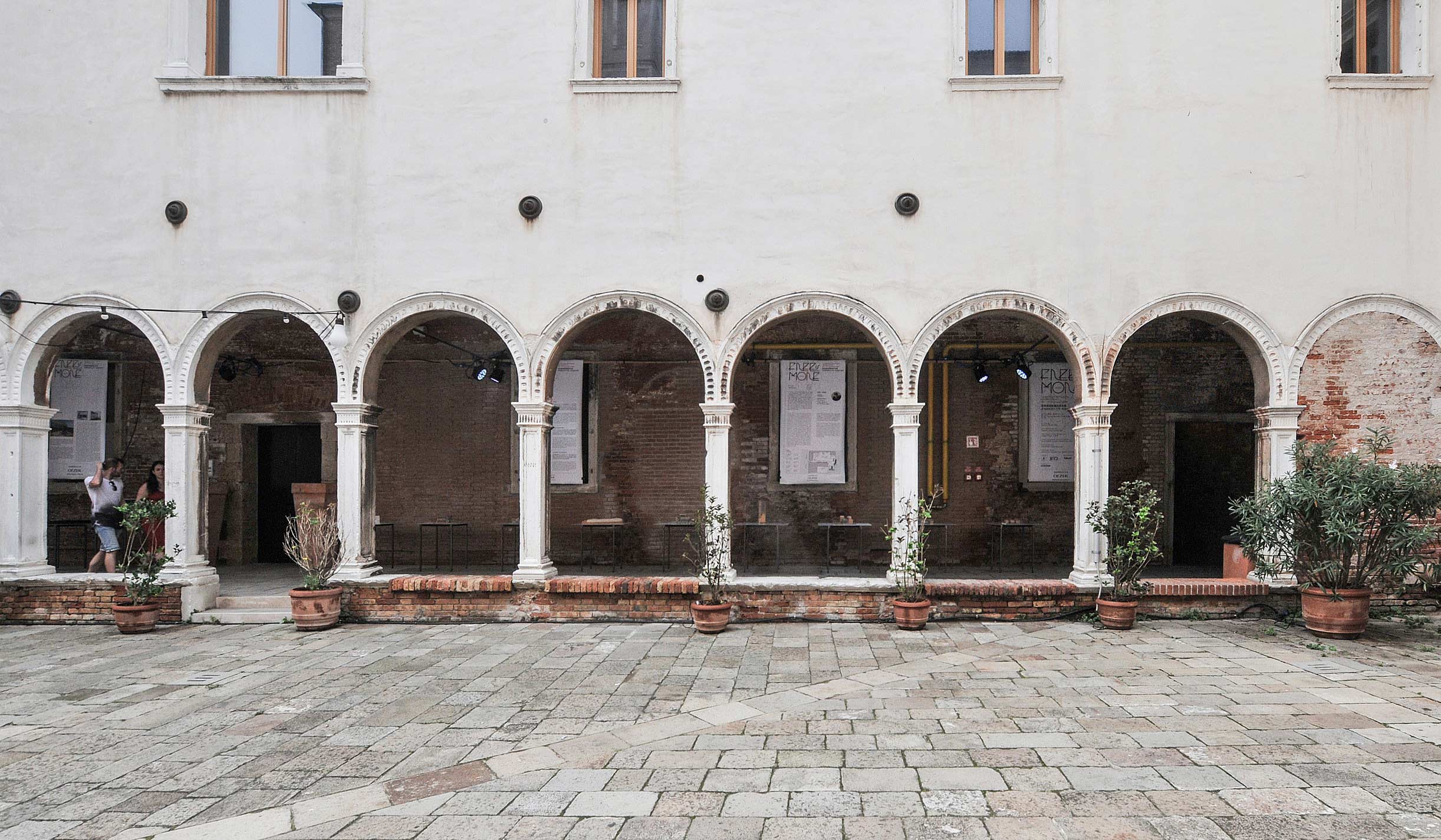

空間回歸-廢棄場域再利用的設計思考
Return of Space – Design Discourse of the Re-Use of Abandoned Domain
主要的展示空間位於ㄇ字型迴廊與環繞的中庭廣場,廊道空間過去長期堆滿雜物,透過空間清整,老建物的牆體修復工程,基礎水電修繕與展示燈光架設,由基礎面的介入將舊有空間改建為可供展示的場域。長條形極具軸向性的廊道左側,以迴廊拱圈形構出一個建築內與外的中介,下方的磚砌平台則讓空間界域有了更清晰的界定,坐椅般的高度使之成為一個可供坐臥的休憩區域所在。右側牆體做為主要展示區域,在不破壞既有架構下,我們運用金屬板與纖細的構架形式,訂製一個個綿延的展示桌檯,輕質的架構與身旁厚重老舊的牆體,形成一強烈的對話,同時也藉由展台的設置強化了古典樣式空間內的韻律感與軸向性。
As the main exhibition space was located at the horseshoe-shaped corridor surrounded by an atrium plaza, and the surrounding atrium square, the old space was converted to exhibition area through fundamental changes in renovating utility and lighting setup. As the corridor has become the medium between the exterior and the interior of the building, clearly demarcated by the brick platform, of which the chair height has made it a great place for resting. As the right-hand side wall was to be to main exhibition area, it was treated with metal plate and slim structure to build one display table after another, a dialogue with the neighboring heavy wall, while the display tables reinforced the rhythmic and axis dynamic of such classic space.
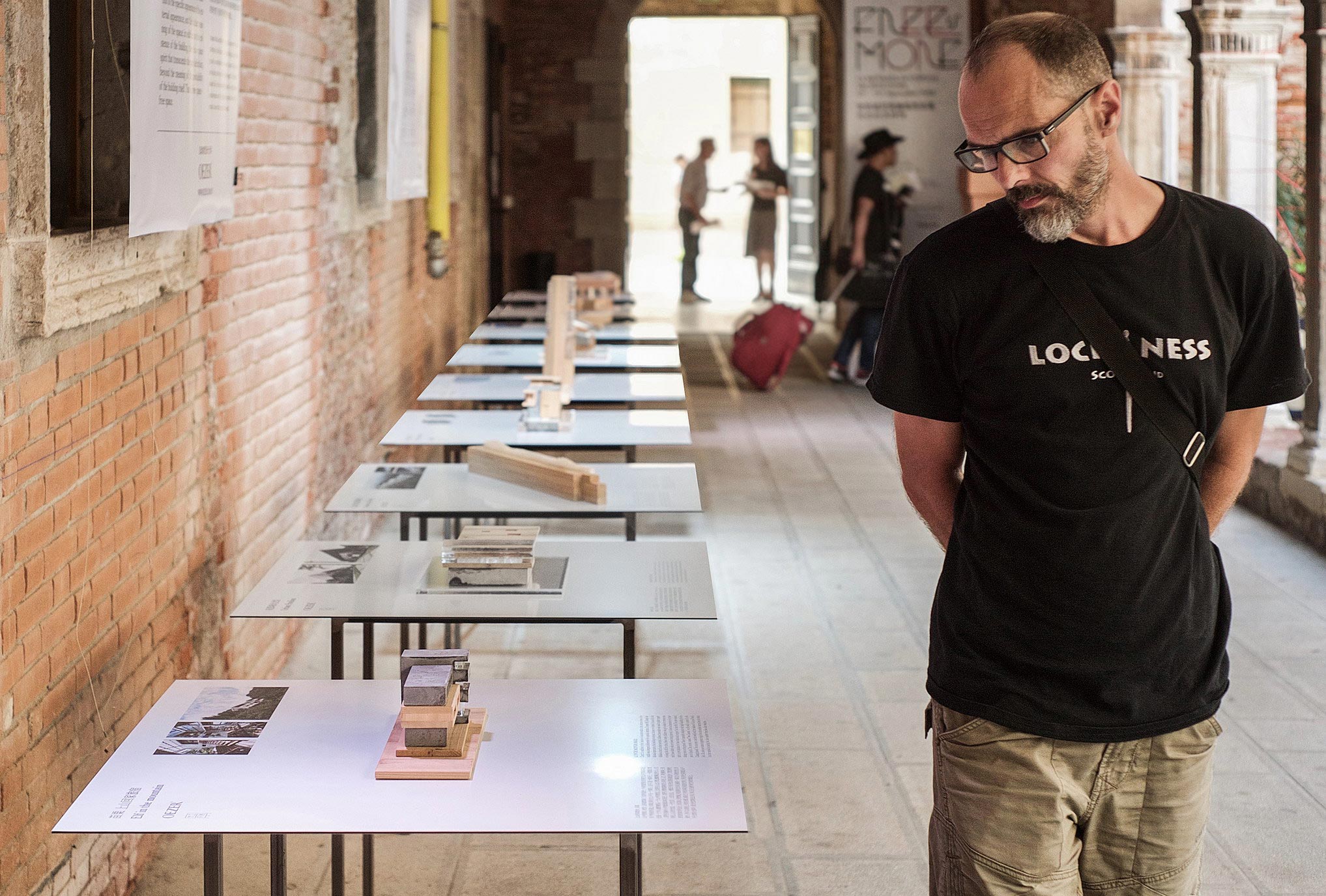
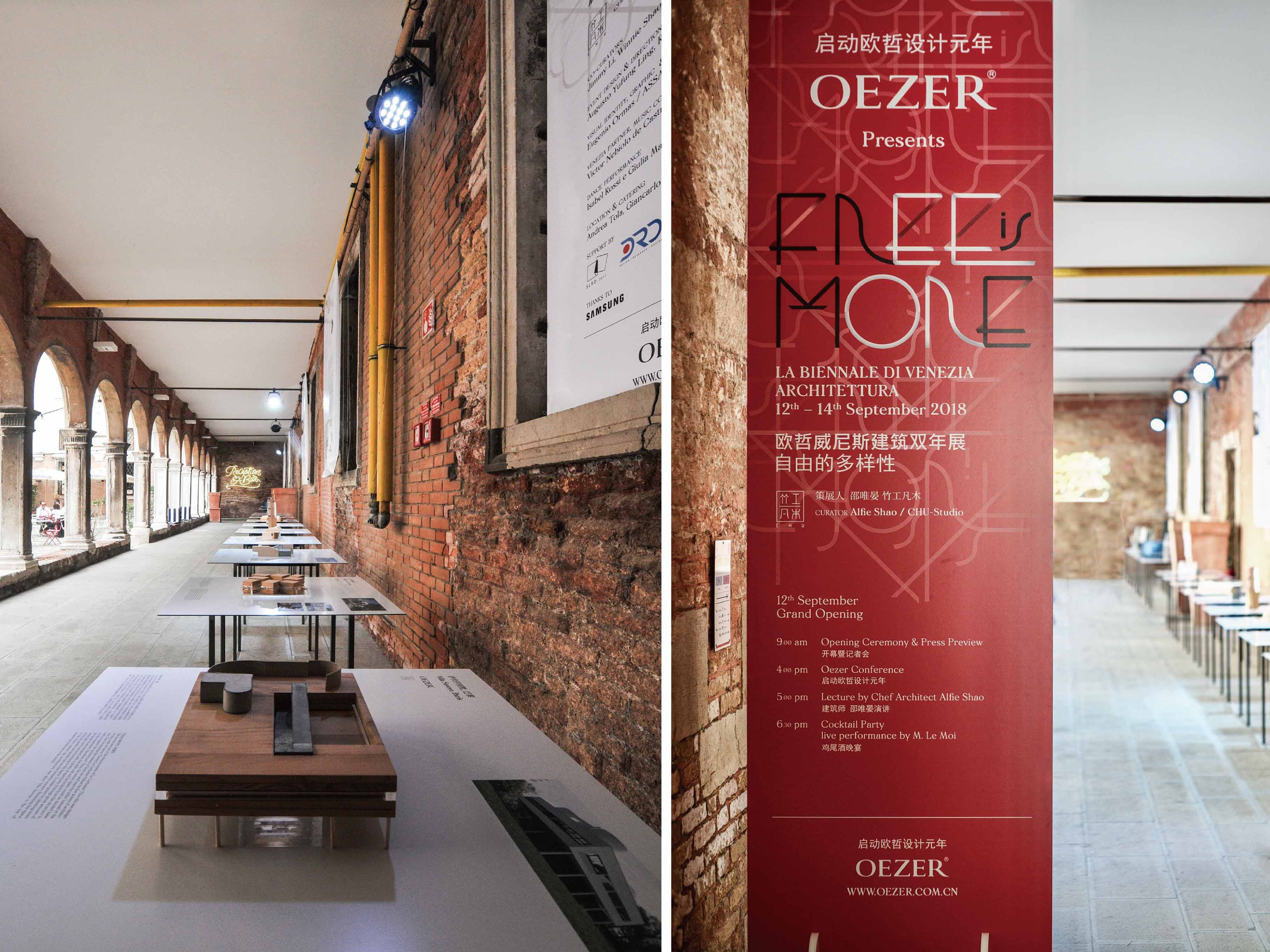
以建築為題-從大師經典到新銳設計,從舊空間到新建築的碰撞
Architecture Thematic – The Collision between Old Space and New Architecture, From Classic Masterpiece to Avant-garde Design
在展示內容的設計規劃部分,我們回歸到本屆威尼斯建築雙年展的主題-對於「自由空間」的探索,藉由frEE is more的策展理念,向柯比意、密斯凡德羅等現代主義建築大師致敬,除邀請當代多元團隊的作品參展外,同時亦邀請亞洲新銳建築團隊SLRD,以模型與裝置的形式,分別展示社會心理、支援教育與永續環境三種空間概念的具體實踐,與各自在工藝性上的操作。藉由一個文化資產建築空間的重新詮釋,加諸予不同維度、向度的空間探討,讓具備歷史人文厚度的修道院空間,成為勾勒未來建築發展願景的載體。
In terms of the content planning for the exhibition content, it returned to the theme of exploration of Free Space, the theme of the Venice Biennale, and through the curative concept of frEE is more, it paid tribute to the Modernist Architecture Master such as Le Corbusier, and Mies Van Der Rohe, etc., by not just having invited the outstanding works of many contemporary design team to participate, also Asia’s upcoming architecture firm, SLRD, to exhibit the creative realizations in terms of three types of spatial concepts of social-psychology, educational support, and sustainable environment. And through the re-interpretation of a cultural heritage building, by bringing in spatial exploration of new dimensions and vectors, it allowed the historical monastery to be transformed into a carrier articulating the vision of future architecture development.
